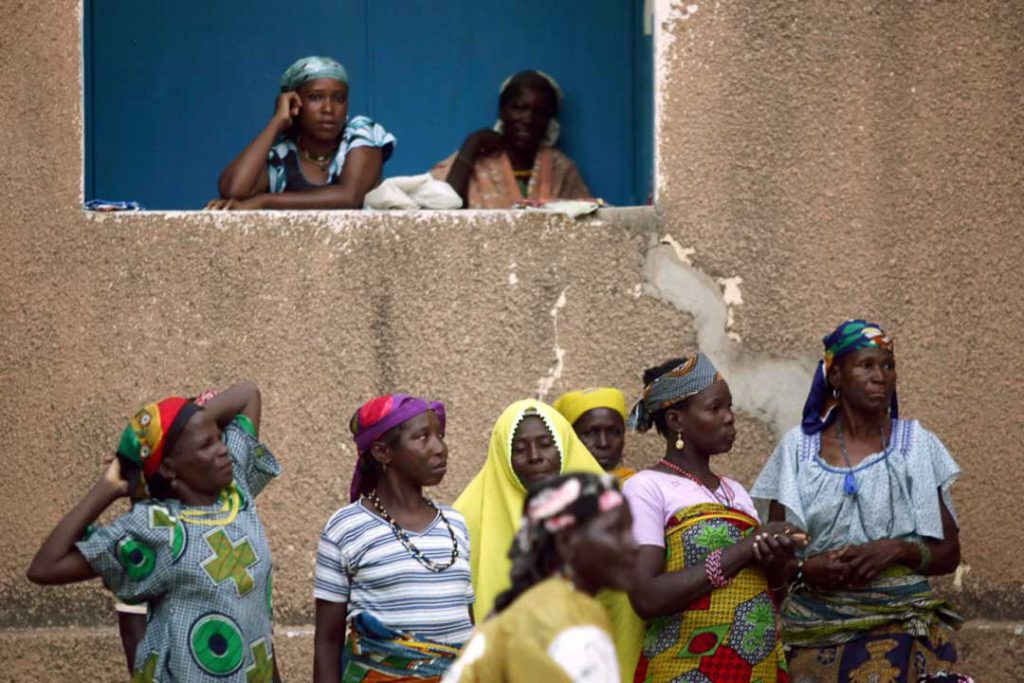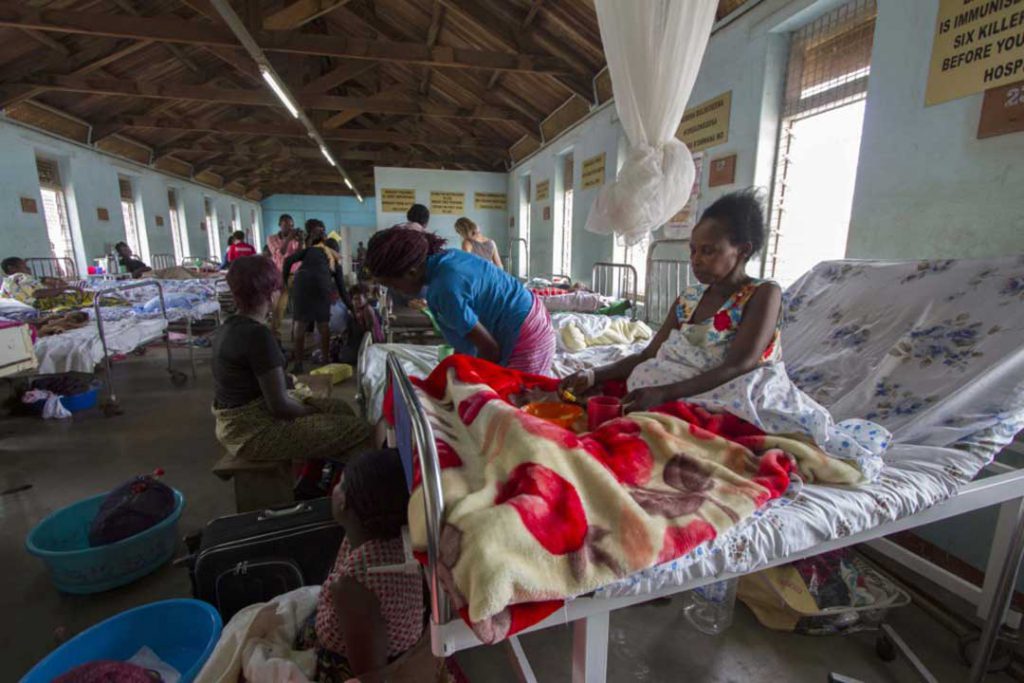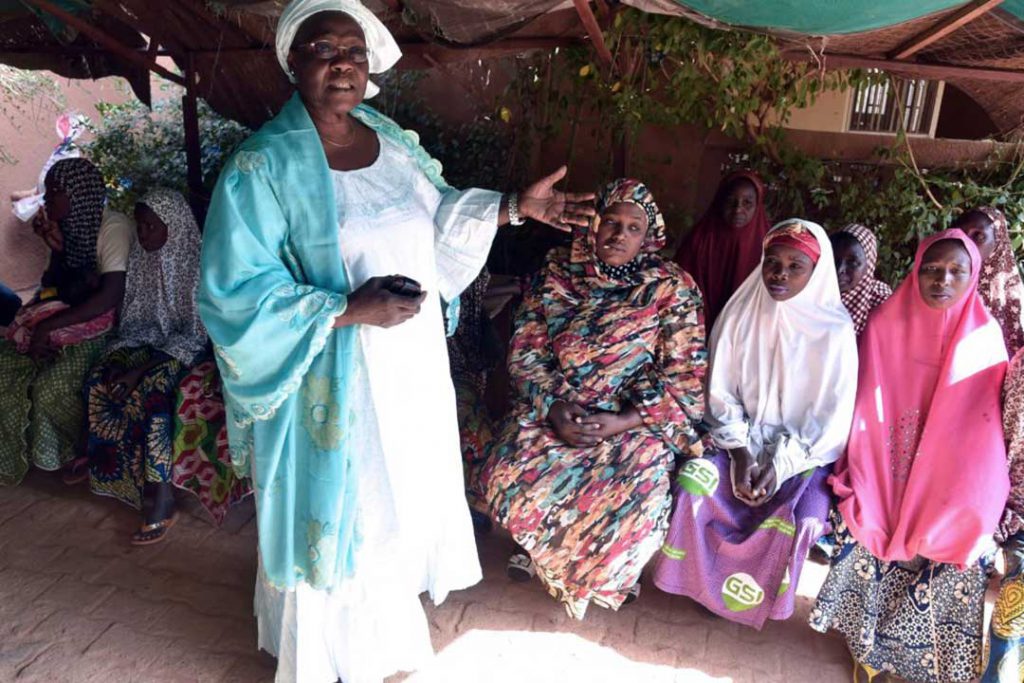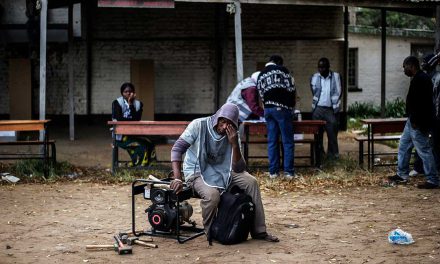Maternal mortality
Postpartum haemorrhage and obstetric fistula are two avoidable conditions that continue to kill and maim women in sub-Saharan Africa every year

Nigerien women suffering from obstetric fistula wait for a chance to be examined and eventually get surgery on July 16, 2008 at the Maradi hospital, southern Niger, as doctors from Turkish help association Deniz Feneri and Doctors Worldwide visit Niger to help some of the 200,000 fistula illness effected women in the country. Obstetric fistula, or vaginal fistula, is a severe medical condition in which a fistula (hole) develops between either the rectum and vagina or between the bladder and vagina after severe or failed childbirth, when adequate medical care is not available. The World Health Organization estimates that approximately 2 million women in Africa, Asia and the Arab region are living with the condition, and some 50,000 to 100,000 new cases develop each year. AFP PHOTO / MUSTAFA OZER (Photo by MUSTAFA OZER / AFP)
Atim (not her real name), from Nigeria’s southern state of Akwa Ibom, was barely a teenager when she was married off to a much older man. She would have preferred to have had a child when she was older, but that was completely out of her control and she found herself pregnant in the first year of her marriage. Her delivery was prolonged and difficult, which was further complicated by the fact that her hearing and speech are impaired. After attempting to cope with the distressing after effects of the difficult birth and with little understanding of what was causing them, Atim ended up at the Family Life and VVF (Vesicovaginal fistula) Hospital Mbribit Itam, in Akwa Ibom’s capital, Uyo. She had developed obstetric fistula. International NGO, the Fistula Foundation, describes an obstetric fistula as occurring when: “a mother has a prolonged, obstructed labour, but doesn’t have access to emergency medical care, such as a C-section.
She often labours in excruciating pain for days. Tragically, her baby usually dies.” For the women who survive this trauma, most of them from impoverished communities and often married young, the physical damage is extensive. Says the Fistula Foundation, “the mother’s contractions continually push the baby’s head against her pelvis. Soft tissues caught between the baby’s head and her pelvic bone become compressed, restricting the normal flow of blood”. The damage leaves holes – fistulae – between the woman’s vagina, bladder and rectum, causing lifelong chronic incontinence unless surgically repaired. Fortunately for Atim, she was saved by the intervention and experience of Dr Sunday Lengmang, who was on a routine visit to the hospital from Jos, in northern Nigeria. Lengmang, a renowned fistula care expert, carried out a two-stage surgery that relieved her of incontinence. Atim is one of the lucky ones; she is not only able to live a normal life thanks to Dr Lengmang, she also avoided becoming a statistic, among the more than 600,000 maternal deaths that occurred in Nigeria between 2005 and 2015, according to a 2019 World Health Organization (WHO) report.
Although there have been reductions in global maternal mortality rates, with a 38% drop per 100,000 live births between 2000 and 2017, the WHO worries that it is still unacceptably high, with “about 295,000 women (dying) during and following pregnancy and childbirth in 2017”. Most of these deaths (94%) occur in poorly-resourced countries, and most of them were avoidable. According to the WHO, sub-Saharan Africa and southern Asia accounted for approximately 86% of the estimated global maternal deaths in 2017. Two-thirds (196, 000) of these deaths were in sub-Saharan Africa alone, with Nigeria accounting for “nearly 20% of all global maternal deaths”, with “no less than 900,000 maternal near-miss cases occurring in the country”. Postpartum haemorrhage (PPH) is the leading cause of maternal deaths and accounts for about 35% of them. Annually, about 14 million women around the world suffer from PPH, with 99% of the deaths occurring in low- and middle-income countries like Nigeria, as opposed to just 1% in high-income countries.

Patients wait in a ward prio to undergo obstetric fistula repair surgery at the Mulago Hospital in Kampala on October 31, 2014. Millions of women in developing countries suffer from the obstetric fistula, a hole in the vagina or rectum caused by prolonged labour without treatment which means they leak urine uncontrollably, and also endure the social stigma arising as a result of it. More than about 200,000 Uganda women live with fistula, but there are 1,900 new cases annually — this is just above the 1,850 women who were treated surgically in 2013, according to a report by the United Nations Population Fund, which funds the majority of repairs through the Campaign to End Fistula. AFP PHOTO/ Isaac Kasamani (Photo by Isaac
The late Humihani Yahaya, from Kogi State in Nigeria’s middle belt region, called her husband on 17 March, 2020 to let him know that she had successfully given birth to a baby girl. Shortly after that, he received a call telling him his wife had begun to bleed uncontrollably. Rather than taking her to the dysfunctional primary healthcare centre a few blocks from her home, her family struggled to get a vehicle to take her to a more functioning hospital, where she died on arrival. In Bwari, a satellite town in Nigeria’s federal capital territory, Nkechi Okonya, 32, the breadwinner of her family, who supported her husband and two children by petty trading, gave birth to premature triplets on 20 April 2018. But after delivering the first baby at the Bwari Primary Healthcare Centre, her labour stalled. “For hours, they kept telling her to push, thinking the baby left inside her was just one, but nothing came out so they referred her to Bwari General hospital,” her cousin, Chinwendu Ekwunife, told journalists.
After delivering the first baby at 9am, it was only at 5pm that day that she was wheeled into theatre. “She delivered the remaining two children, but was bleeding heavily,” Ekwunife said. “She took four pints of blood in less than 15 minutes.” Okonya died shortly afterwards. For many impoverished women like Atim, who do survive an obstructed labour, the price they pay is a life of constant incontinence, shame, social segregation and health problems. In 2018, the WHO estimated that more than two million young women were living with untreated obstetric fistula in Asia and sub-Saharan Africa. This is a situation that experts like Dr Henry Uro-Chukwu attribute to malfunctioning health systems. Uro- Chukwu is the Director: Training, Research and Mobilisation at the National Obstetric Fistula Centre (NOFIC), in Abakaliki, Ebonyi State, in Nigeria’s south-east region. He told Africa in Fact that the underlying cause is “the state of the health system; fistula is a reflection of a bad health system”.
In addressing the condition in Ebonyi, support first came from the United States Agency for International Development’s (USAID) Fistula Work Project, followed by the federal government’s interest in making the facility the first national VVF centre in Nigeria. The centre now receives patients on a regular basis from 17 states across Nigeria as well as some from neighbouring countries like Cameroon. Referring to a study conducted in Ebonyi State, Uro-Chukwu says there is another factor to be considered: poorly performed caesarean sections. The situation is similar in Kenya. Galgallo Golicha, project officer of the Safe Motherhood Project, Amref Health Africa in Kenya, told Africa in Fact that some of the new cases of obstetric fistula presenting for treatment at hospitals are the result of “the doctors accidentally puncturing the bladder and/or uterus” during caesarean sections or other pelvic surgeries. It is also impossible to ignore the cultural influences that raise the risk of fistula and PPH, adding to maternal mortality across sub-Saharan Africa.
These include a form of female genital mutilation, commonly called yankan gishiri in northern Nigeria, and which is also practised in Niger, early marriage and childbearing, and birthing in churches and homes. Other traditional practices that put women at risk include: the belief that surgical delivery by C-section and birthing in hospital are signs of the woman’s weakness; the culture of delivering the first child in the mother’s house; the belief that the husband has the sole right of consent for his wife to undergo any surgical procedure; and a preference or insistence that female personnel attend the birth. Ogochukwu Mbamalu, a senior medical officer at NOFIC, says that while fistula is rarely fatal in itself, the longterm consequences are devastating for patients. She points out that cultural practices, ostracisation and the stigma attached to fistula lead patients to suffer depression, and in some cases they become suicidal. She advocates that more attention be paid to helping patients with their mental health as part of their recovery process.

Salamatou Traore, founder of the DIMOL (Dignity) non-governmental organisation, speaks about obstetric fistula at the NGO’s health centre in Niamey on February 19, 2016. – Niger is in a fight against fistula — a medical condition that affects girls married too young. (Photo by ISSOUF SANOGO / AFP)
Meanwhile in Kenya, Golicha identifies the lack of fistula surgeons as the biggest obstacle to remedying the situation. Although Kenya is “navigating this by organising fistula repair camps at least twice a year in each region,” he says this is a very expensive approach, and unsustainable. African governments, and Nigeria in particular, have signed into various international conventions, but these all seem to be nine-day wonders. The governments appear to be doing little regarding implementation, said Lengmang, who strongly advocates that gender equality policies, universal education and universal health coverage are issues that could help in fighting and preventing these health challenges for women, thus assisting in reducing the maternal mortality rate.
Adie Vanessa Offiong is an award-winning journalist in Abuja, Nigeria, with experience in investigative, science and development journalism. She is member of the Health Systems Global, African Investigative Publishing Collective and of the Center for Collaborative Investigative Journalism. Vanessa was the winner of the 2019 Africa Media Development Foundation (AMDF) Journalists of the Year Award and was the only female finalist of the 2019 Continental Journalism Awards on the African Union Charter.













